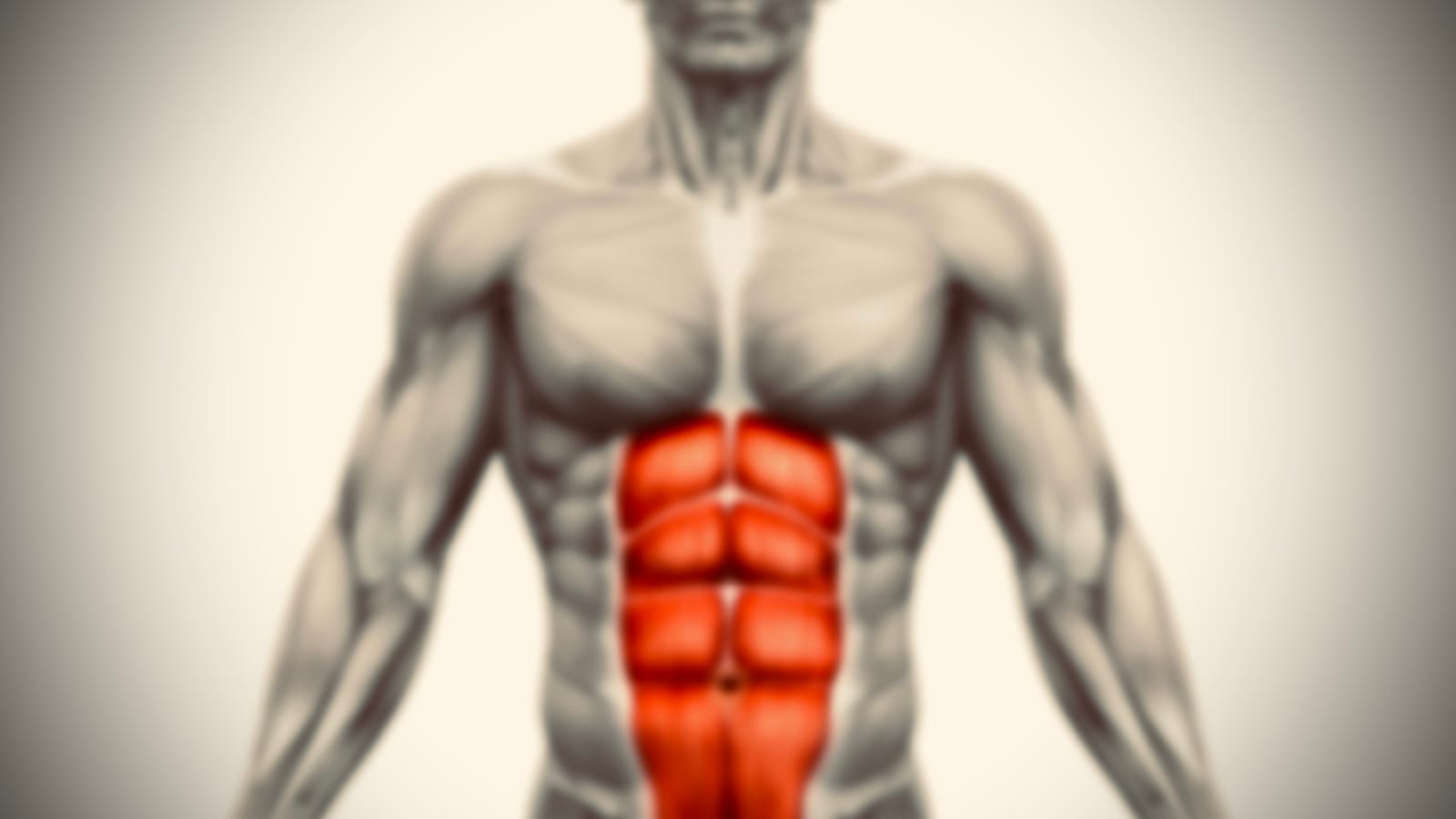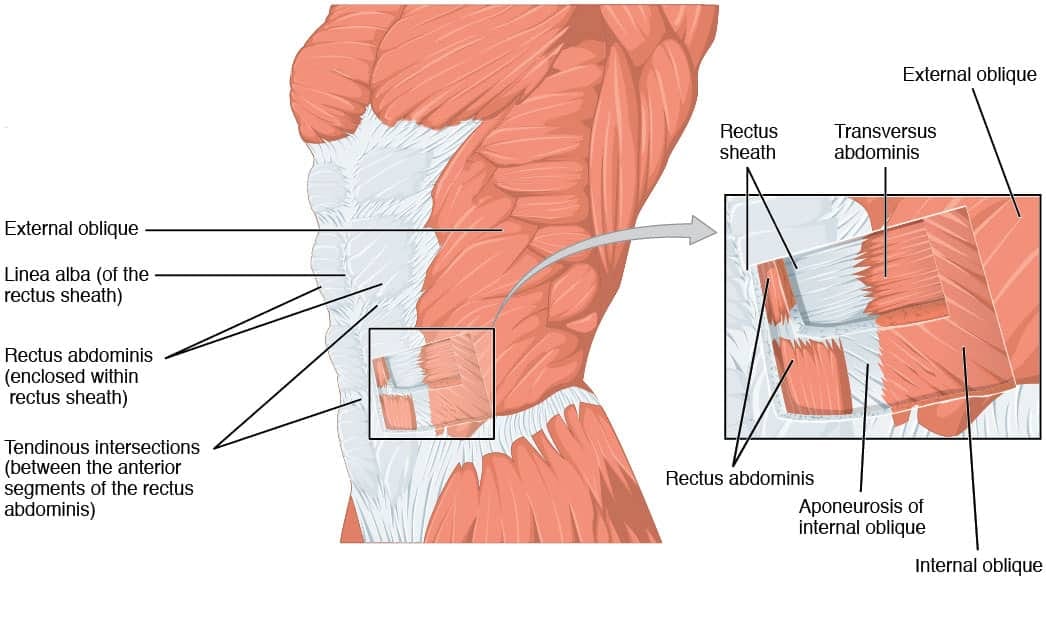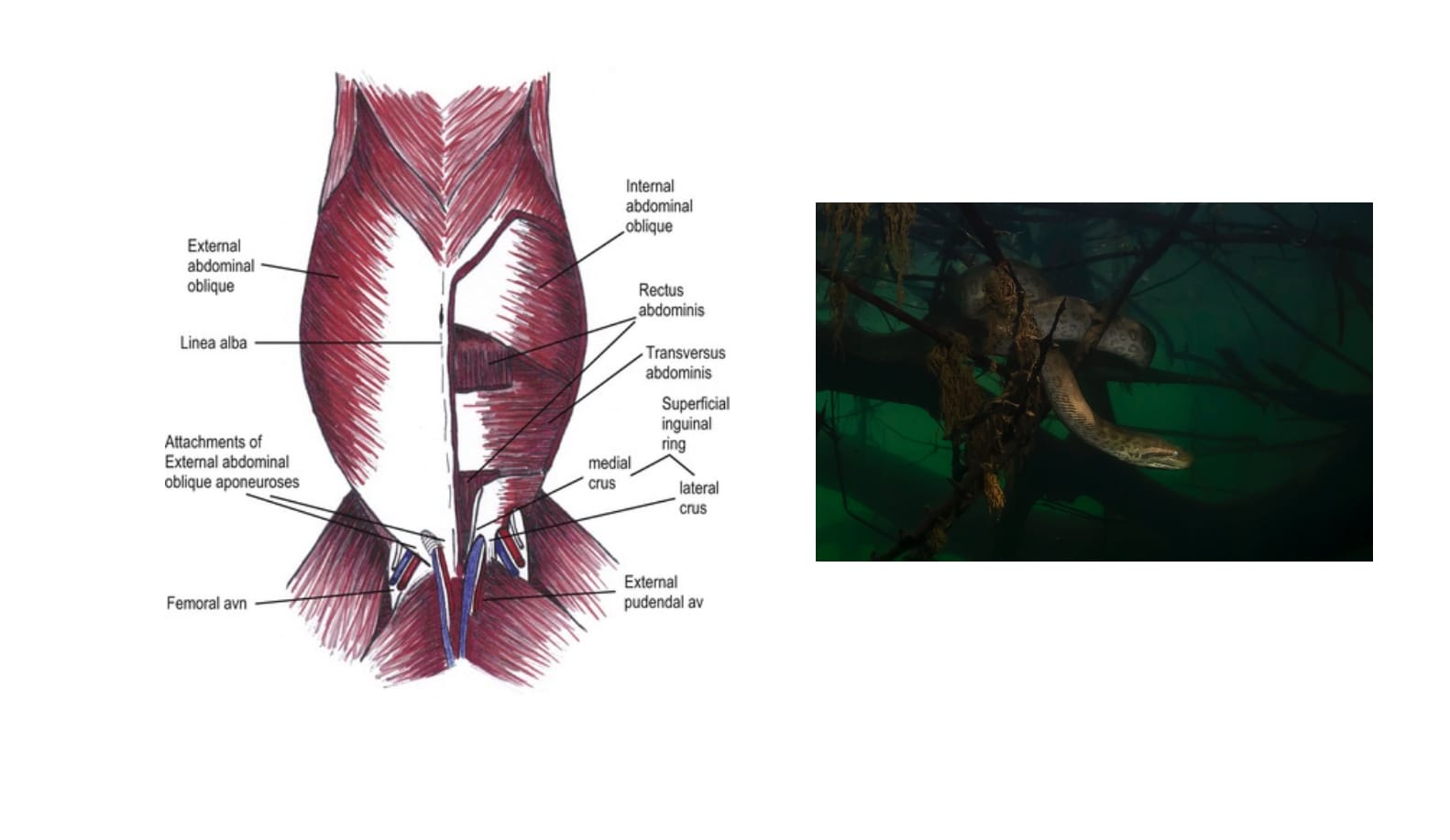Why You Have A Six Pack (and not one massive ab)

Recently, I was sitting in an excruciatingly long, three-hour car journey to my uncle's house, bored out of my mind, sitting next to my younger brother. He too, was in a little glassy daze, staring out the window. Then, he asked me a question that, while seeming deceptively simple, caught my interest and provoked me to write this article. “Kinan, why do we have six packs? Why not three packs, two packs, or even a one pack?”. I tried to answer, but stuttered, and fell silent. For the rest of the day, that question bugged me, which was really annoying. And so, in this article, I look to provide an answer as to why fitness fanatics don’t walk around sporting a single massive ab.
But First, How Is A Six Pack Structured?
The “six pack” is the visible part of a muscle called the rectus abdominis that runs vertically along the front of the abdomen. It inserts into the xiphoid process of the sternum (tiny, pointed piece of bone at the bottom of your sternum), and the cartilage of the middle ribs (ribs 5-7). Most people have three insertions forming six packs, but some may have two or four, forming four or eight packs. Some can even be asymmetric. This is determined by genetics, not training. It’s enclosed in a fibrous sheath formed by the aponeuroses (flat, sheetlike tendon) of the external oblique, and the trans versus abdominis. The sheath supports and protects the muscle, and transmits forces across the abdomen, helping spread tension. When contracted, myosin heads attach to actin and pull them inward, shortening sarcomere. This process repeats across many sarcomeres, causing the whole muscle to contract. ATP and calcium ions are essential for this process. The abdominal muscles are placed in an antagonistic muscle pair with the erector spinae, which are a group of back muscles that extend the spine backward. This is an example of muscle coordination, essential for smooth and controlled movement.
Your core muscles are splits into four groups. The rectus abdominis (front), obliques (sides), trans versus abdominis (deeper core layer), and pelvic floor muscles, your pelvic floor muscles, and even your diaphragm, believe it or not. Together, they support internal organs, prevent lower back injury, maintain posture, balance, and enable strong controlled movement, (which was really important for our ancestors) as I’ll explain now.

So Why Not A One or A Two Pack?
This question can be traced back thousands, maybe millions of years, to evolution pressures, anatomy, and biomechanics. Let’s start with why evolution wouldn’t allow this. As animals develop features that allow them to adapt and specialise in some environments, their bodies are slowly but surely moulded to the area surrounding them. Evolution doesn’t necessarily “design” a muscle from scratch, it modifies what already exists. Before early humans (hominins) became fully upright, our primate ancestors - including those in the genus Australopithecus and earlier species - spent extensive amount of time climbing, swinging, and navigating through trees. They evolved to excel in this specific environment, which placed many demands on the torso and abdominal muscles, shaping how the rectus abdominis evolved. Firstly, climbing requires repeated bending and straightening of the torso. A segmented abdominal muscle allows for a much finer control over spinal movement, which is important when adjusting posture mid-climb or while hanging. For those of you who work out, think hanging leg raises.
Next, the new mental layout, alongside developed oblique muscles allows for better trunk rotation, which is important when grabbing branches in different directions, reaching for food, or avoiding predators. While swinging through trees, our ancestors also needed plenty of shock absorption and load distribution. Jumping between branches or landing on limbs causes sudden forces throughout the body. The tendinitis intersections help spread out mechanical stress, preventing injury and stabilising the spine, a bit like how a suspension bridge distributes weight. Swinging further includes stabilisation during brachiation (swinging using arms) and requires a stable core to prevent excessive swinging or torsion of the trunk. The segmented abdominal muscles work to lock and support the torso as the arms and legs move and independently. While hanging onto unstable, dodgy branches, this was important, too. Once we evolved, and moved to land, we maintained those benefits of twisting, bending, and stability, but later on refined them further. They then became crucial muscles for bipedal locomotion, endurance running, and pelvic support for childbirth. Instead of losing these segments, we retained them for longer term biomechanical advantages. So that’s why six packs are useful. We wouldn’t have evolved to have one or two packs as they would be less flexible, as the muscle would not be able to stretch or contract. They would also be less efficient as segmenting the muscle allows for partial contraction, so you don’t have to spent energy to contract one massive muscle, you can just contract the parts you need (e.g., top segments used for initiating trunk flexion/forced exhalation, and lower segments are often used for pulling the pelvis towards the ribcage/maintaining intra-ab pressure during heaving lifting or bowel movements).
The one pack would also be more injury prone; one big muscle would concentrate stress in fewer areas, increasing the risk of strains or tears during sudden or repetitive movements. Furthermore, during embryological development, the rectus abdominis forms from paired sheets of muscle inside the embryo that naturally include tendinous intersections. These intersections are part of hope the muscle forms, not random but encoded by developmental genes like Myf5 and MyoD, which help to guide muscle patterning. A one pack would require rewriting these pre-set genetic instructions, which evolution didn’t even favour, as there was no benefit.

So, What About Other Animals?
Other animals, such as dogs, apes, and whales, also have a rectus abdominis with tendinous intersection, which we often don’t see as they’re covered by fur or blubber, paired with the fact they’re not hypertrophied. Apes have complex abdominal intersections, which supports the tree swinging theory. Dogs and cats have long rectus muscles with fewer tendinous intersections, so you might consider them as having more of a one or two pack layout, functionally speaking. These animal walk on four legs (quadrupeds), so their spinal movement is quite different to us humans, so their core stability needs differ. They don’t need to bend forward at the waist like us, and their movement relies more on the spinal extensors and limb muscles than on deep trunk flexion. A long, flat rectus abdominis without tendinous intersections provides a strong, uniform support wall for the underbelly, as well as stable rogan protection during running, or lying down. It’s a lot better for transmitting force along the body without segmenting it. It’s more of a plank of muscle, useful for supporting organs, and stabilising the spine during motion, not for detailed movement, or swinging, like us.
Their legs also support their entire body, adding less of a need for abdominal muscles to counteract back muscles in an antagonistic pair. Now, for fun, what about a ridiculous number of abdominal intersections? The top contender for the most would be a snake, with some reaching just under three hundred segmentations. This would be needed for a much more precise control over their entire body, since they rely entirely on their muscles and spine to move, needing localised, often undulatory movement in hundreds of places at once, shifting to create a smooth, wave-like motion. Each set of muscles are attached to two to four hundred vertebrae, and attached to them are blocks of muscle, called myomeres, which are all wrapped around the body. The segmental structure allows for powerful propulsion. But how did it end up this way?
As they evolved from lizards, snakes’ limbs slowly shrank and the spinal column lengthened, and increased muscle segmentation compensated for lost movement from the arms and legs. Now, this would happen for more efficient swimming, burrowing, and so the animal could be able to slip between rocks or dense vegetation in order to hunt. Another theory is hydrodynamics. For example, boa constrictors have become so specialised that even they would be able to ambush, drown, and kill a jaguar with relative ease, as long as the jaguar was swimming. With immense adaptations developed within the competitive amazon rainforest, such as highly developed axial muscles, kinetic skulls, and stretchy, expandable abdominal muscles. These two examples go to show just how specialised each animal is to its environment, and how every bodies structure has been designed to function in perfect, biological harmony.

The rectus abdominis – often reduced to surface level appearance is a window into biomechanics, evolution, and survival strategy. Across numerous species, segmentation musculature reflects a universe need for control, stability, and movement efficiency. From tree dwelling primates, to canines, to limbless predators, these adaptations go to demonstrate how deeply interconnected structure, and function truly are. In studying the “six pack,” we uncover more than muscle – we uncover the evolutionary blueprint of motion itself.